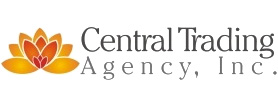Blockchain as a potentially paradigm-shifting concept has been investigated and debated for a number of years, but only recently are we seeing this concept being put into action. When procurement and supply chain management are concerned, this year has already been eventful.
Namely, when some of the world’s biggest companies such as Walmart, Nestlé, Tyson Foods and Unilever start testing blockchain technology to improve their supply chains, people take notice. In March, SAP Ariba also announced their new partnership with a London-based blockchain startup Everledger, venturing into the blockchain ecosystem.
Unfortunately, as is often the case with novel technologies, it can be difficult to discern between hype and reality when blockchain is concerned, regardless of the industry.
Blockchain Basics
Blockchain is a concept that was developed as a supporting mechanism for the world’s first cryptocurrency, Bitcoin. As opposed to traditional currencies that are governed by centralized organizations, Bitcoin and all transactions made using it are recorded and authenticated against a decentralized, distributed ledger. This decentralized authentication requires tremendous amounts of computational power and is performed by innumerable computers around the world (Bitcoin miners).
Every transaction made is recorded and documented in a distributed way across a blockchain network, immutable and accessible to anyone who is involved in it. One such transaction is referred to as a block and the blocks are arranged chronologically, as a chain. Hence the term blockchain.
A blockchain network is verified at regular intervals (usually measured in minutes) and provides a way of authenticating transactions in a way that is immutable, incorruptible and easy to check by interested parties.
It should be pointed out that there is no single, “global” blockchain, in the same way there is one Internet. Blockchain networks are built, developed and maintained for different purposes, with different actors and interested parties.
While the concept was originally developed to govern a new currency, its applications (both theoretical and practical) did not stop there.
When the blockchain concept is extrapolated to procurement, its potential is glaringly obvious.
Blockchain’s Potential in Procurement
On both macro and micro procurement management level, blockchain holds massive potential to streamline procurement processes and make them more cost-effective and secure.
For one, a blockchain network would dramatically speed up the vendor verification process as an organization would have access to years of recorded transactions which clearly show how different vendors performed in respect to quality of goods, delivery times, value added and more. The same goes for supplier catalogs and e-marketplaces which would be evaluated more precisely and authentically.
Issuing of tenders could also be made more transparent and more rapidly deployed. This would shorten the procurement process (making it cheaper) and help prevent procurement fraud.
Contracts between organizations and their suppliers would be made digital, in form of smart contracts. These contracts would be easily modified and set up in a way where payments and other actions are triggered and executed automatically throughout the procurement process. In addition to this, such contracts would allow for multi-party collaborations where everyone’s adherence to the smart contract would be easily monitored.
Of course, receipt, warehouse management and logistics in general would also be more transparent, negating the need for complex in-person and paper-based verification of sources, intermediaries and anything else that might negatively affect the procured goods.
In short, almost every stage of the procurement lifecycle would be simplified and made more efficient.
Limitations of Blockchain
While there is no doubt that all of the aforementioned uses for blockchain in procurement management sound exciting, it is important to manage one’s expectations, especially considering the fact that blockchain is still only an emerging technology.
For one, the logistics of developing private blockchain networks are incredibly complex at the moment and they require third-party involvement, as evidenced by the fact that even such companies like Walmart and SAP need outside partners to do it. As a result, the costs of developing such a network are sizable. A hypothetical public blockchain would circumvent these obstacles, but it would introduce new challenges such as security concerns and certain legal questions.
Adopting the blockchain technology would also require participation on the vendors’ side. Considering potential benefits, their participation should not pose much of a challenge, but certain problems could still arise. For example, a vendor that works with a number of organizations would have to become involved in many different private blockchains, negating the convenience factor.
Furthermore, it should be pointed out that a growing blockchain requires growing computational resources and it is possible to encounter a situation where the investments in sustaining an expanding blockchain would outweigh its beneficial effects.
Finally, while blockchains are inherently resistant to hacker intrusions thanks to robust encryption and their decentralized nature, applications that are employed to make a blockchain usable can be compromised, which can have cascading negative effects on the blockchain as a whole.
Preparing for the Future
Blockchain, as a concept, has the same transformational potential that the internet has fulfilled to a great extent. There is a good chance it will completely change the way business is done, finances are handled and political decisions are made. However, as Marco Iansiti and Karim R. Lakhani from Harvard Business School predict, it will probably take a couple of decades for this to happen.
At the moment, organizations with comprehensive procurement departments and procurement agencies alike have to ensure that they stay informed. Their c-suite, managers and staff should follow the blockchain industry and perhaps even outline certain ideas that could be employed down the line. Another way to stay involved is to talk to other procurement industry experts and find out where they stand on blockchain.
As off-the-shelf solutions and other more affordable options become available, there will come a time when organizations and procurement agencies might have to do projections and models to determine whether blockchain might improve their procurement processes in a cost-effective way.
Closing Word
Ignoring blockchain would be myopic to say the least and, while its applications in procurement are still mostly experimental, it is more likely than not it will become an integral part of the industry in the future.
Of course, certain challenges will have to be overcome and organizations that follow the industry will find it easier to do so.


